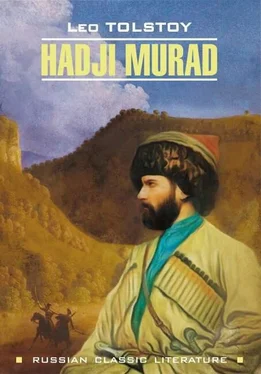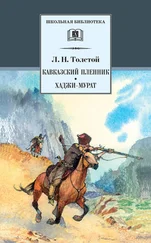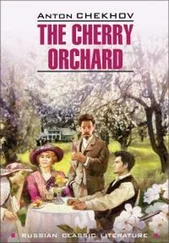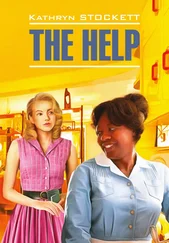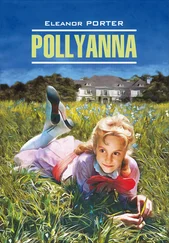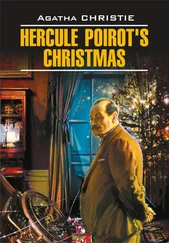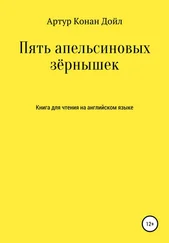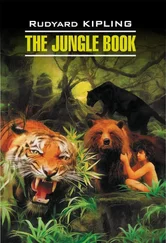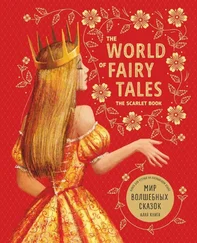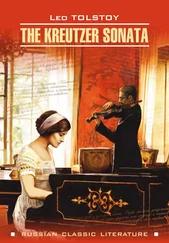I was returning home by the fields. It was midsummer, the hay harvest was over and they were just beginning to reap the rye. At that season of the year there is a delightful variety of flowers – red, white, and pink scented tufty clover; milk-white ox-eye daisies with their bright yellow centers and pleasant spicy smell; yellow honey-scented rape blossoms; tall campanulas with white and lilac bells, tulip-shaped; creeping vetch; yellow, red, and pink scabious; faintly scented, neatly arranged purple plaintains with blossoms slightly tinged with pink; cornflowers, the newly opened blossoms bright blue in the sunshine but growing paler and redder towards evening or when growing old; and delicate almond-scented dodder flowers that withered quickly. I gathered myself a large nosegay and was going home when I noticed in a ditch, in full bloom, a beautiful thistle plant of the crimson variety, which in our neighborhood they call “Tartar” and carefully avoid when mowing – or, if they do happen to cut it down, throw out from among the grass for fear of pricking their hands. Thinking to pick this thistle and put it in the center of my nosegay, I climbed down into the ditch, and after driving away a velvety bumble-bee that had penetrated deep into one of the flowers and had there fallen sweetly asleep, I set to work to pluck the flower. But this proved a very difficult task. Not only did the stalk prick on every side – even through the handkerchief I wrapped round my hand – but it was so tough that I had to struggle with it for nearly five minutes, breaking the fibers one by one; and when I had at last plucked it, the stalk was all frayed and the flower itself no longer seemed so fresh and beautiful. Moreover, owing to a coarseness and stiffness, it did not seem in place among the delicate blossoms of my nosegay. I threw it away feeling sorry to have vainly destroyed a flower that looked beautiful in its proper place.
“But what energy and tenacity! With what determination it defended itself, and how dearly it sold its life!” thought I, remembering the effort it had cost me to pluck the flower. The way home led across black-earth fields that had just been ploughed up. I ascended the dusty path. The ploughed field belonged to a landed proprietor and was so large that on both sides and before me to the top of the hill nothing was visible but evenly furrowed and moist earth. The land was well tilled and nowhere was there a blade of grass or any kind of plant to be seen, it was all black. “Ah, what a destructive creature is man… . How many different plant-lives he destroys to support his own existence!” thought I, involuntarily looking around for some living thing in this lifeless black field. In front of me to the right of the road I saw some kind of little clump, and drawing nearer I found it was the same kind of thistle as that which I had vainly plucked and thrown away. This “Tartar” plant had three branches. One was broken and stuck out like the stump of a mutilated arm. Each of the other two bore a flower, once red but now blackened. One stalk was broken, and half of it hung down with a soiled flower at its tip. The other, though also soiled with black mud, still stood erect. Evidently a cartwheel had passed over the plant but it had risen again, and that was why, though erect, it stood twisted to one side, as if a piece of its body had been torn from it, its bowels drawn out, an arm torn off, and one of its eyes plucked out. Yet it stood firm and did not surrender to man who had destroyed all its brothers around it… .
“What vitality!” I thought. “Man has conquered everything and destroyed millions of plants, yet this one won’t submit.” And I remembered a Caucasian episode of years ago, which I had partly seen myself, partly heard of from eye-witnesses, and in part imagined.
The episode, as it has taken shape in my memory and imagination, was as follows.
*
It happened towards the end of 1851.
On a cold November evening Hadji Murad rode into Makhmet, a hostile Chechen aoul 1 1 aoul – a Tatar village
that lay some fifteen miles from Russian territory and was filled with the scented smoke of burning Kizyak 2 2 kizyak – a fuel made of straw and manure
. The strained chant of the muezzin had just ceased, and though the clear mountain air, impregnated with kizyak smoke, above the lowing of the cattle and the bleating of the sheep that were dispersing among the saklyas 3 3 saklya – a Caucasian house, clay-plastered and often built of earth
(which were crowded together like the cells of honeycomb), could be clearly heard the guttural voices of disputing men, and sounds of women’s and children’s voices rising from near the fountain below.
This Hadji Murad was Shamil’s naib 4 4 naib – a Tatar lieutenant or governor
, famous for his exploits, who used never to ride out without his banner and some dozens of murids 5 5 murid – a disciple or follower: “One who desires” to find the way in Muridism. Muridism Almost identical with Sufism.
, who caracoled and showed off before him. Now wrapped in a hood and burka 6 6 burka – a long round felt cape
, from under which protruded a rifle, he rode, a fugitive with one murid only, trying to attract as little attention as possible and peering with his quick black eyes into the faces of those he met on his way.
When he entered the aoul, instead of riding up the road leading to the open square, he turned to the left into a narrow side street, and on reaching the second saklya, which was cut into the hill side, he stopped and looked round. There was no one under the penthouse in front, but on the roof of the saklya itself, behind the freshly plastered clay chimney, lay a man covered with a sheepskin. Hadji Murad touched him with the handle of his leather-plaited whip and clicked his tongue, and an old man, wearing a greasy old beshmet 7 7 beshmet – a Tatar undergarment with sleeves
and a nightcap, rose from under the sheepskin. His moist red eyelids had no lashes, and he blinked to get them unstuck. Hadji Murad, repeating the customary “Selaam aleikum!” uncovered his face. “aleikum, selaam!” said the old man, recognizing him, and smiling with his toothless mouth. And raising himself on his thin legs he began thrusting his feet into the wooden-heeled slippers that stood by the chimney. Then he leisurely slipped his arms into the sleeves of his crumpled sheepskin, and going to the ladder that leant against the roof he descended backwards, while he dressed and as he climbed down he kept shaking his head on its thin, shrivelled sunburnt neck and mumbling something with his toothless mouth. As soon as he reached the ground he hospitably seized Hadji Murad’s bridle and right stirrup; but the strong active murid had quickly dismounted and motioning the old man aside, took his place. Hadji Murad also dismounted, and walking with a slight limp, entered under the penthouse. A boy of fifteen, coming quickly out of the door, met him and wonderingly fixed his sparkling eyes, black as ripe sloes, on the new arrivals.
“Run to the mosque and call your father,” ordered the old man as he hurried forward to open the thin, creaking door into the saklya.
As Hadji Murad entered the outer door, a slight, spare, middle-aged woman in a yellow smock, red beshmet, and wide blue trousers came through an inner door carrying cushions.
“May thy coming bring happiness!” said she, and bending nearly double began arranging the cushions along the front wall for the guest to sit on.
“May thy sons live!” answered Hadji Murad, taking off his burka, his rifle, and his sword, and handing them to the old man who carefully hung the rifle and sword on a nail beside the weapons of the master of the house, which were suspended between two large basins that glittered against the clean clay-plastered and carefully whitewashed wall.
Читать дальше
Конец ознакомительного отрывка
Купить книгу
